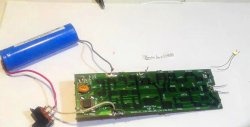How to make a 220 V generator from a trimmer engine
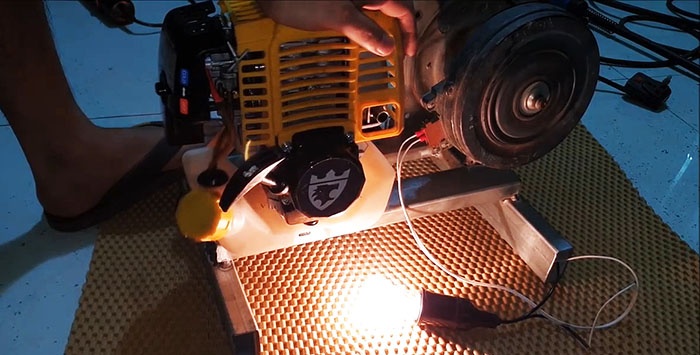
I am sure that at least once in your life you needed a portable 220 V generator. With the help of it you needed to power something in conditions where a regular network is not available. In general, a gasoline generator itself is an extremely useful thing, and it can be useful even at home, taking into account the not frequent, but sometimes, power outages for one reason or another.
Buying a new device is quite expensive, but if you have a broken trimmer with a working motor lying around in your workshop, you can use it and make a generator based on it.
Will need
- Gasoline engine from a brush cutter. It is advisable to use four-stroke models.
- The engine from an electric lawn mower is used as a generator. It is quite capable of working in the opposite direction - generating electric current. Other instances can also be used.
- A pair of pulleys.
- Traction force transmission belt.
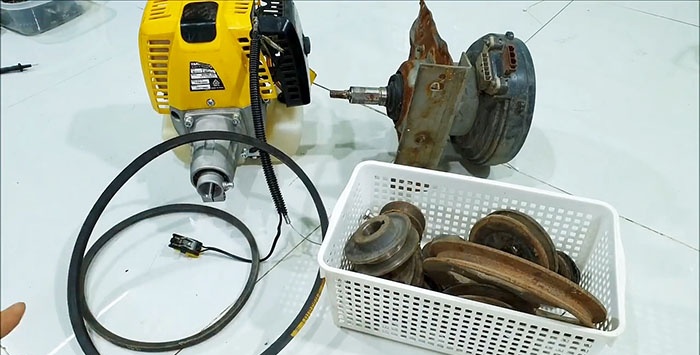
Idea
The idea is this: to place the engines parallel to each other. And the rotation is transmitted by means of a belt drive.
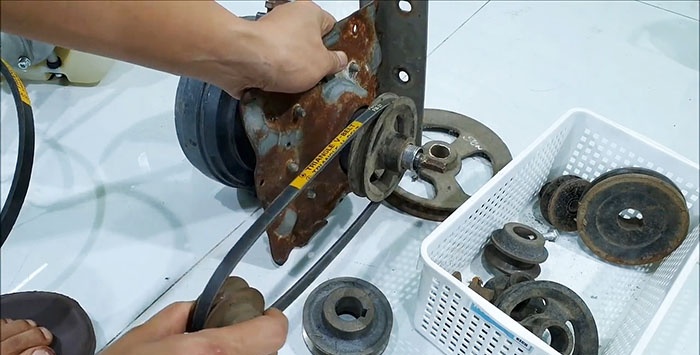
Before implementation, I decided to check how the motor from a lawn mower generates current. I rotate its shaft with screwdrivers.
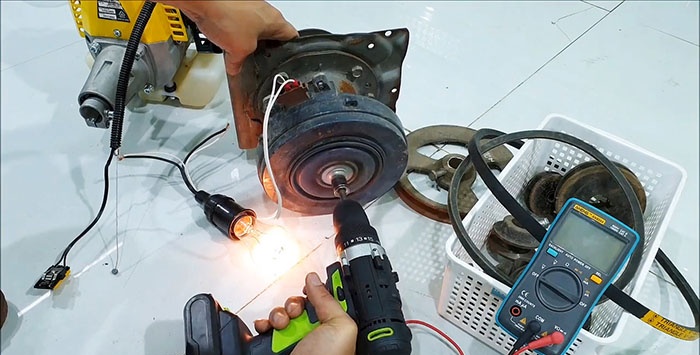
As you can see, a 40 Watt 220 V incandescent lamp is used as a load. Of course, a screwdriver cannot produce the speed required for sufficient reproduction, however multimeter shows at a maximum of 156 Volts. But this is a preliminary result.
Making a gasoline generator from a lawn mower engine
Let's move on to implementing the idea. First of all, we remove the flywheel casing with the mount where the rod was previously inserted and, using a grinder, we saw off its nose to completely open the shaft.
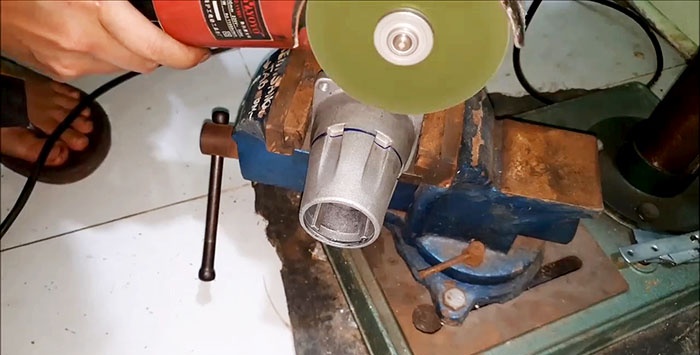
The centrifugal clutch is assembled in the same unit.
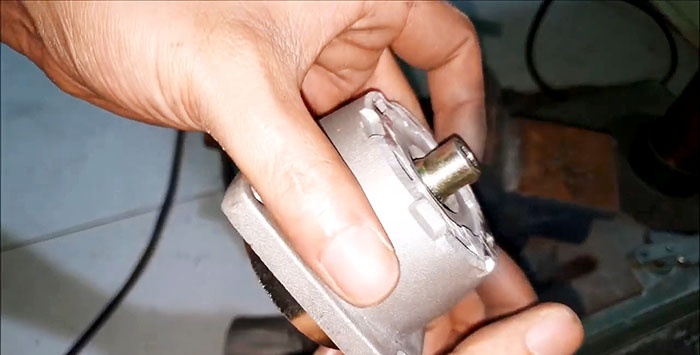
It is necessary to select a pulley to match the size of this shaft. Unfortunately, I didn't find any suitable ones. So I took the pulley and fitted it with a bushing of threaded connectors.
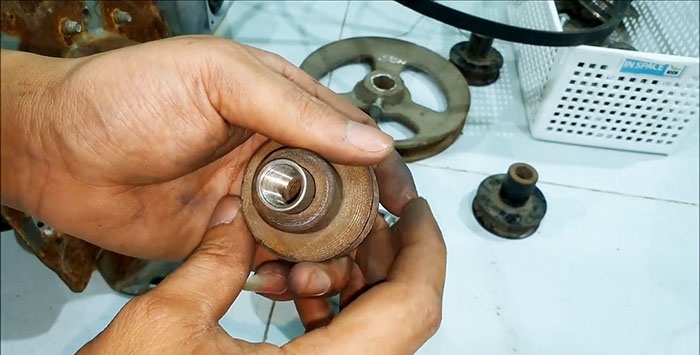
I checked how it would fit.
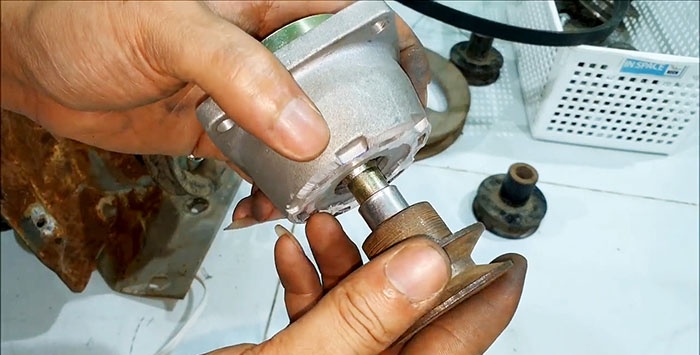
I used a grinder to cut off the excess.

Using a round file, I ground down the inner surface to size.
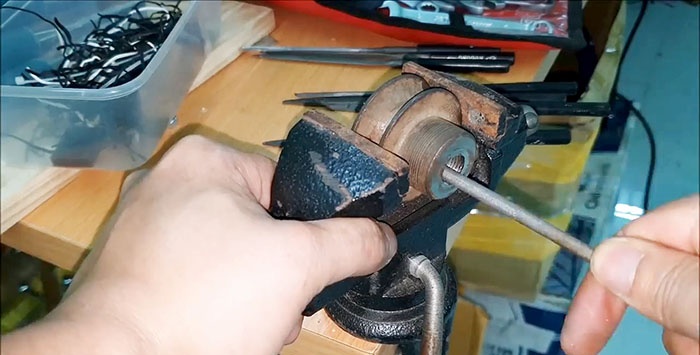
I drilled a hole in the side and tapped it.
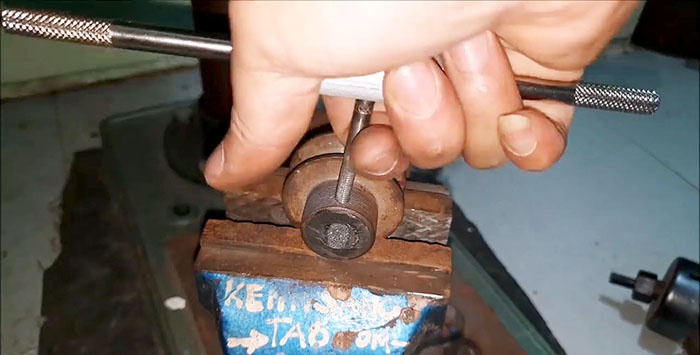
I picked up the bolt.
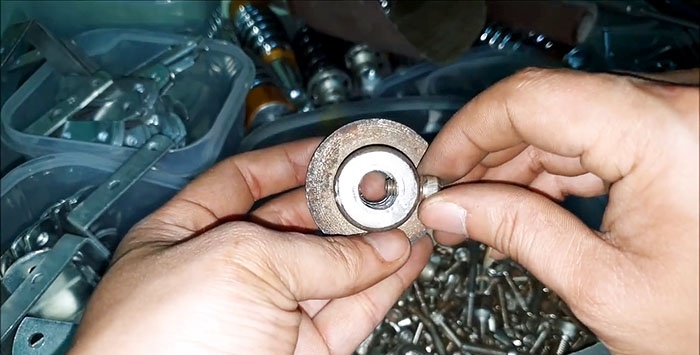
Then I ground off the shaft on one side.
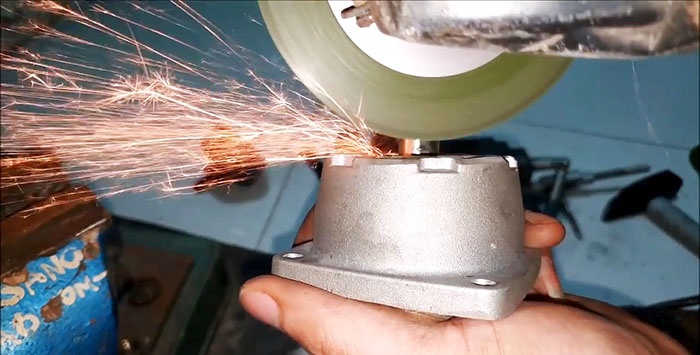
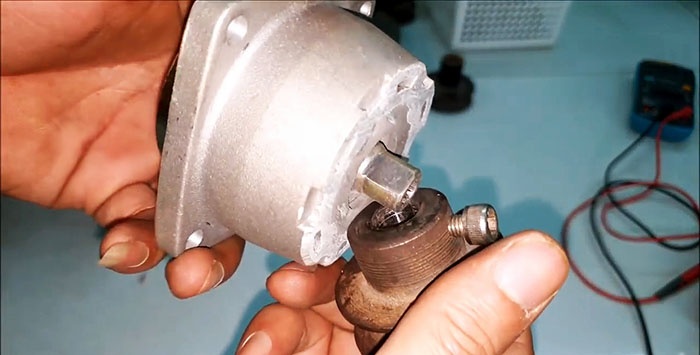
We put on the pulley and tighten it with the side bolt.
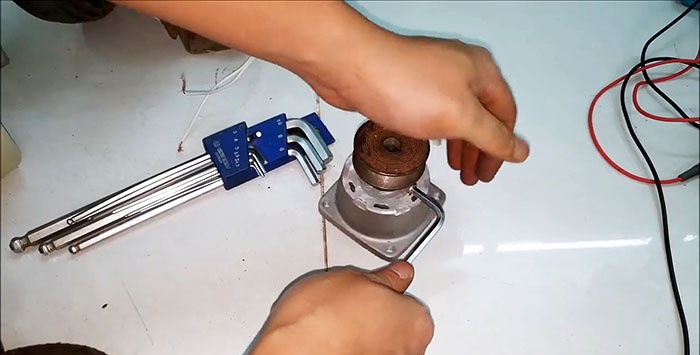
We screw the assembly to the engine.
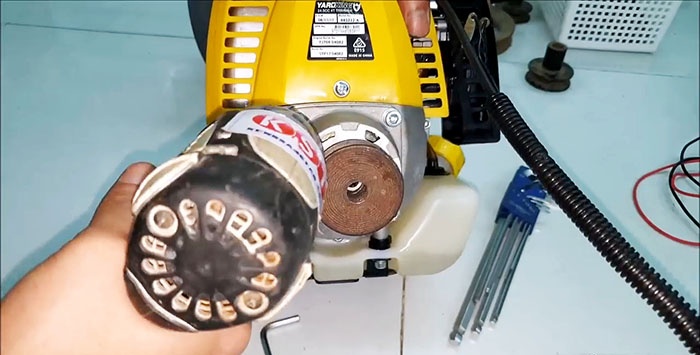
The pulley was matched to the generator almost exactly. A hole was also drilled on the side, a thread was cut and a bolt was selected for fixing.
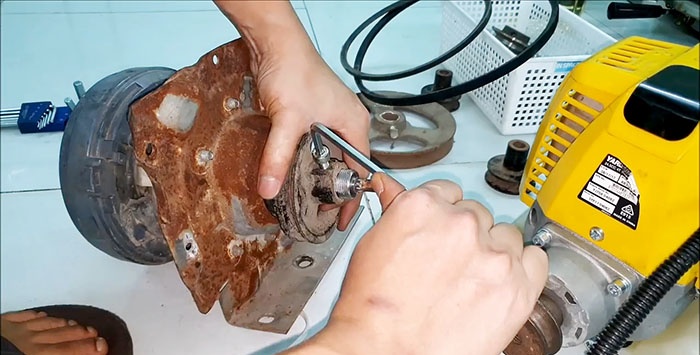
Now it was decided to make a frame from a galvanized profile. We take measurements and determine the size of the entire structure.
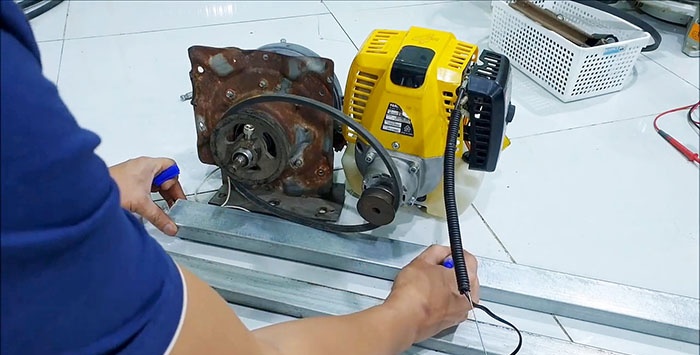
We weld the frame. We drill holes for mounting the generator.
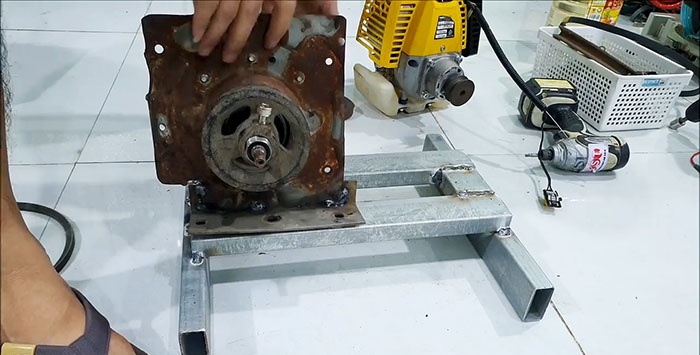
We fasten the engine mount with self-tapping screws.
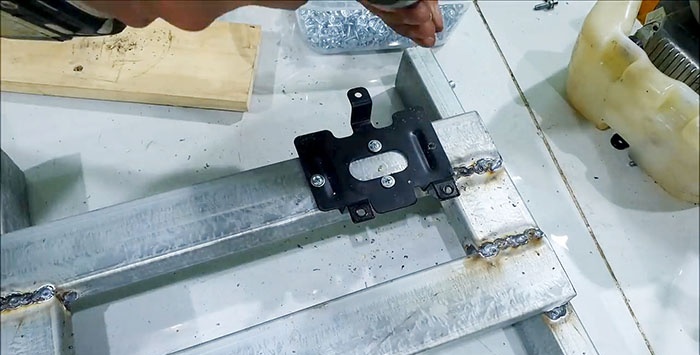
And then the engine itself.
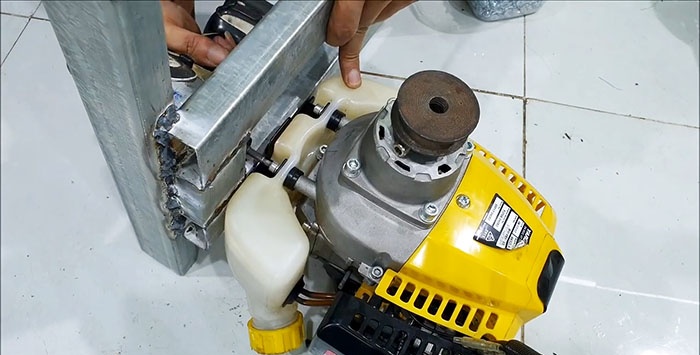
We secure the motor with bolts and nuts.
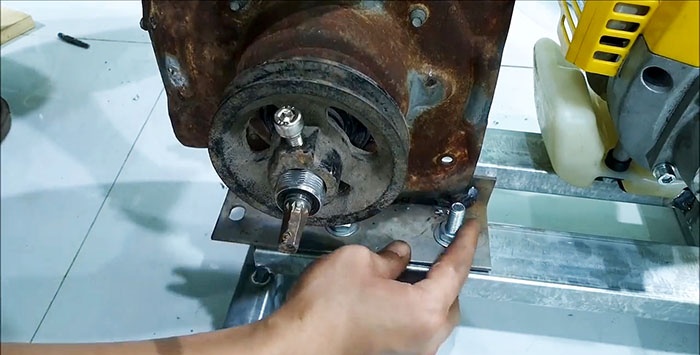
Since the gasoline engine shaft experiences lateral belt load, it was decided to make additional oblique fasteners and weld them into the frame.
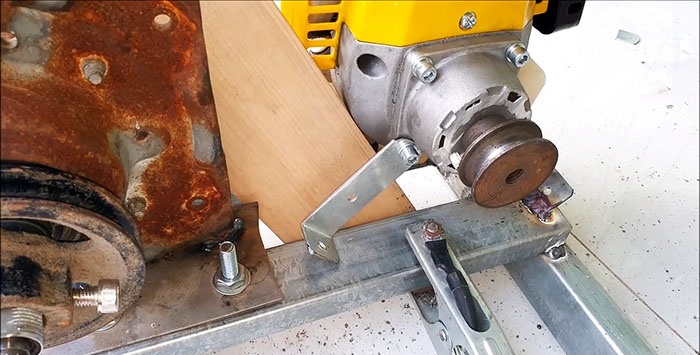
We put the belt on the pulleys.
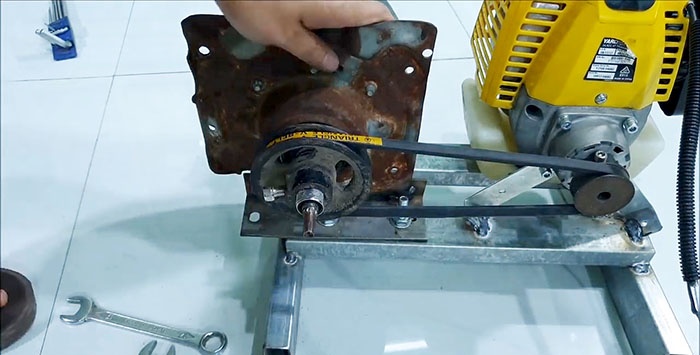
Disconnect the throttle control cable. And the speed will be further regulated by the idle rod.
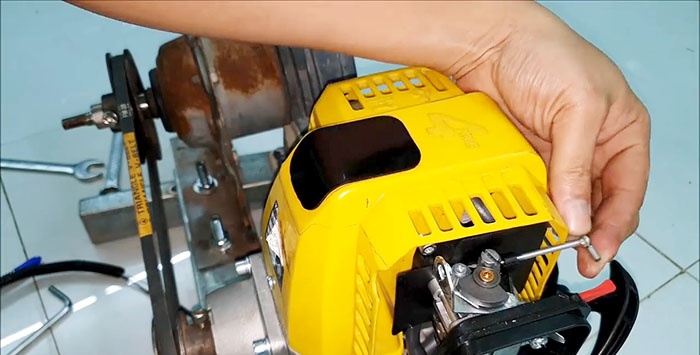
From the board we make a connection and control panel.

We attach a voltmeter, a network adapter and a button to it. We solder the wires from the engine responsible for the ignition to the button, so that when necessary the engine can be stopped.

Check in operation
We start the engine. By adjusting the idle speed we set the output voltage at the generator output to around 220 V.
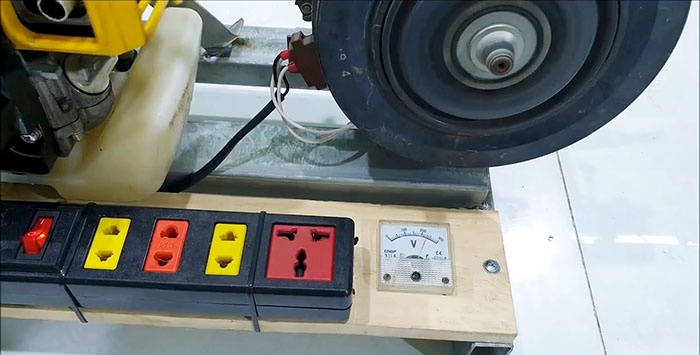
We connect various loads. The voltage drop is not significant.
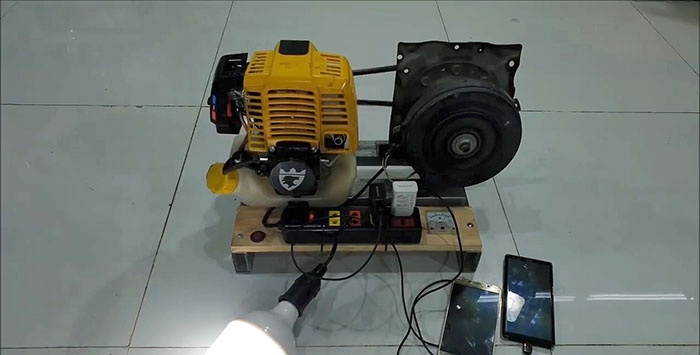
I can’t say about the power of the installation itself, but I think it’s quite possible to get 200-300 watts from it.

Watch the video
Similar master classes
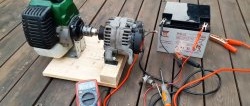
A simple do-it-yourself gasoline generator made from available parts

Homemade mini gasoline generator 12 V from a trimmer
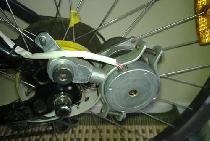
Bicycle generator from a stepper motor

How to convert any asynchronous motor into a generator

How to turn a washing machine motor into a 220 V generator

Generator from an asynchronous motor
Particularly interesting
Comments (0)



